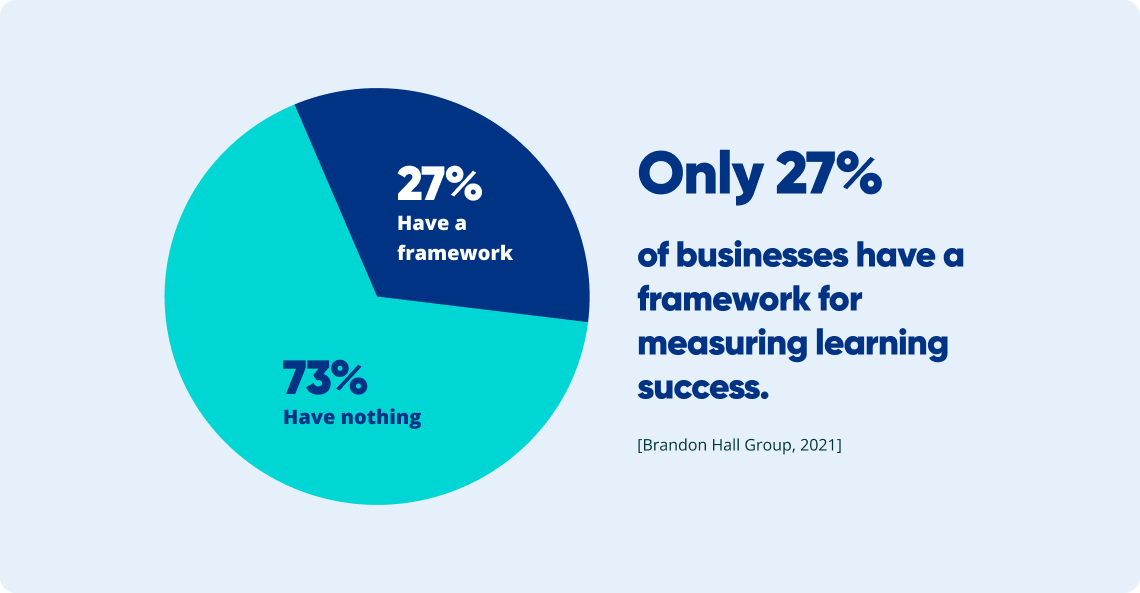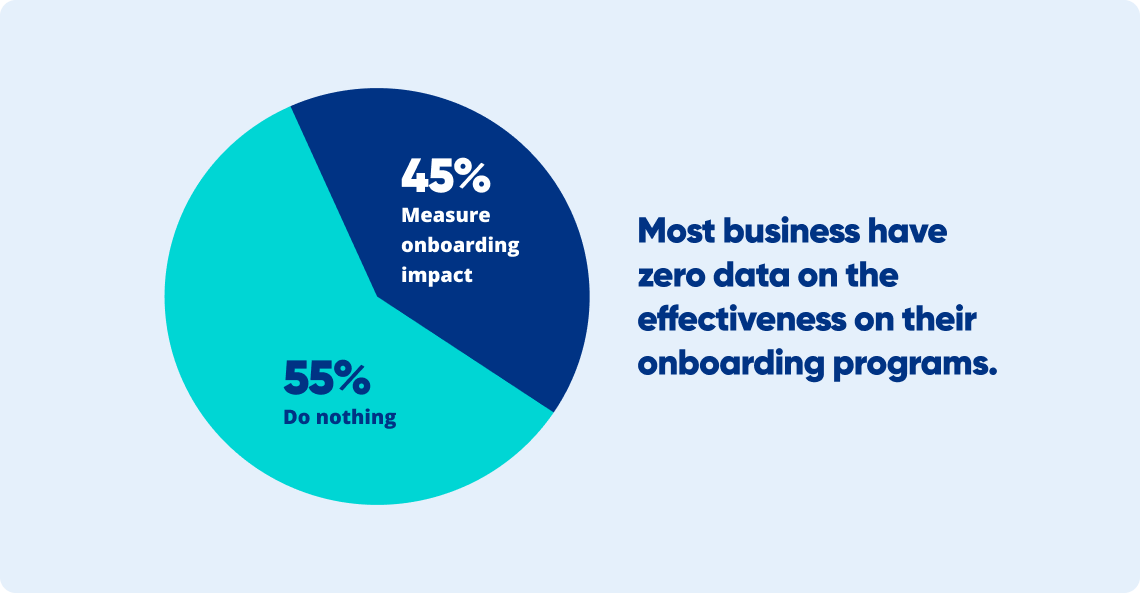Let’s talk about proving the business impact of learning.
First, it’s the #1 focus area and the #1 challenge for L&D teams (ahead of upskilling and improving retention).
Second, most businesses are failing.

Bad news. And senior leaders are starting to notice. They want to see the business impact of their L&D investment.
Not engagement, not course ratings: Impact.
Here’s how to make it happen.
Step 1: Set the right goals
Get explicit and specific:
Are you training employees or customers?
Are you focusing on skill development or trying to fix a broken process?
Is this mandatory compliance training or are you trying to create a culture of innovation?
And remember: Involve the learners now.
If you’re working on a new sales enablement program, get your sales leaders to help you with the measurement criteria and ask them what metrics they care about.
Step 2: Collect learning data
You’ve got your goals, now get your data. Aim for a mix of current and historical data from all points in the learning process.
“Just get the data!” might sound reductive. But it can be easier than you expect. You just need to find the right person to talk to. Someone in your org can export it for you or set you up with some credentials.
If you use Docebo, it’s even easier: Learn Data will give you instant access to all your learning data in a clean, organized, and ready-to-analyze format.
Once you have learning data to measure, stand up tall. You’re already ahead of the curve:
 Onboarding is critical. But most businesses don’t measure it.
Onboarding is critical. But most businesses don’t measure it.
Step 3: Analyze learning performance
It’s time for the exciting part: Moving from data collection to data analysis. This is where you can start looking at trends over time and searching for correlations between variables.
To understand learning performance, you’ll want to compare learning data to non-learning data. For an easy start, look for performance data from your HRIS or customer data from your CRM.
Try to answer questions like this:
Do salespeople have higher quota attainment after completing training?
Do customer renewal rates correlate to time spent learning?
How does customer education impact the amount of support tickets we receive?
Want a cheat sheet? Here are some variables to look at for different use cases:

Step 4: Explain the business impact of learning
Take the insights you uncovered in Step 3 and convert them into more tangible metrics.
If the average salesperson takes eight months to fully ramp and learning cuts it by 25%, you’ve just gotten two extra months of productivity.
So, how much did they sell in those two months? That figure is a cold, hard return on your learning investment.
This is what you want to show to your leaders.

Wrap up
You can’t just assume your learning programs are impacting the business. You need to prove it—with data.
Odds are, you’re already getting the results and your learning platform already has the data. Now you just need to analyze it the right way and prove that learning is effective.
Do it right and you won’t just be running an exceptional learning program. You’ll be among the 3% of organizations that consistently tie their learning to business outcomes.
